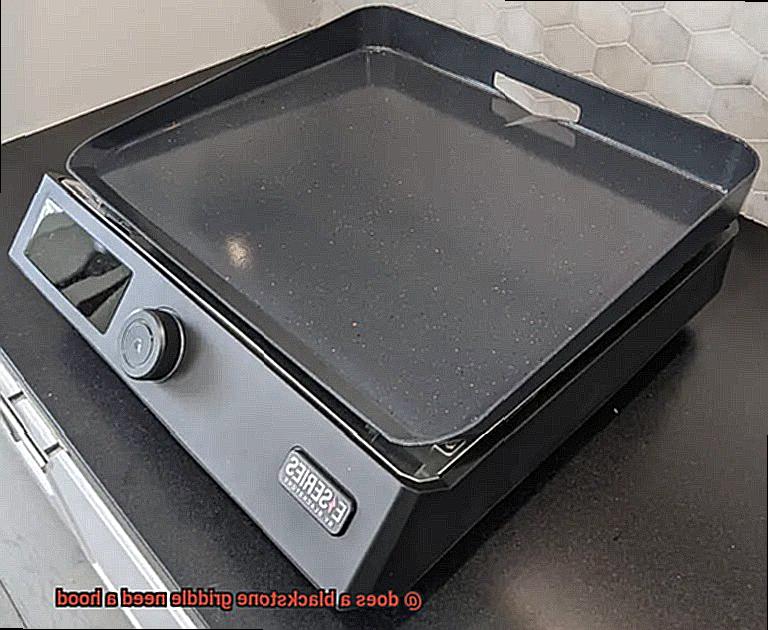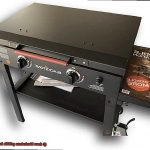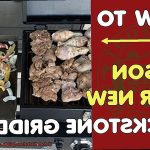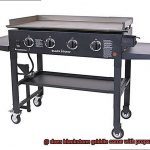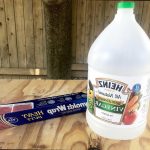Do you crave the sizzle of juicy burgers and crispy bacon strips? The Blackstone griddle is a game-changer in the realm of outdoor cooking, offering a flat-top design, easy-to-use controls, and a large cooking surface. It’s no wonder that more grill enthusiasts are shifting to this versatile propane griddle. But, many people wonder – does a Blackstone griddle need a hood or not?
A hood, also known as a vent hood or range hood, sits above kitchen stoves or grills to extract smoke, steam, and harmful fumes. However, when it comes to Blackstone griddles, there’s no straightforward answer.
While not necessarily required, installing a hood can benefit your Blackstone griddle. Without a cover on the griddle’s surface, one of the main concerns is the dispersal of smoke and oils in the air. A hood can capture and dispel the smoke and heat emanating from the griddle. This can help reduce respiratory issues or eye irritation for those who are cooking.
In this blog post, we’ll explore whether or not your Blackstone griddle needs a hood. We’ll discuss the benefits of having one installed, available types of hoods on the market today, and alternative solutions for ventilation. Whether you’re an avid BBQ enthusiast or seasoned home cook looking to take your outdoor cooking game up a notch – this post will help you make an informed decision about whether or not you need a hood for your Blackstone griddle.
Contents
Factors to Consider When Deciding Whether or Not to Install a Hood
Let’s explore the factors to consider when making this decision.
Location is a crucial factor to consider. If you plan on using your griddle outdoors, ventilation is typically adequate, and a hood may not be necessary. However, if you plan on using your griddle indoors, it’s highly recommended to install a hood to prevent smoke and grease from accumulating in your kitchen.
The type of food you plan on cooking is another important factor. High-fat content foods such as bacon or hamburgers produce more smoke and grease, making a hood necessary to prevent unpleasant odors and potential health hazards. However, if you plan on cooking less greasy foods like vegetables or seafood, a hood may not be as necessary.
The size of your griddle is also an essential consideration when deciding whether or not to install a hood. A small griddle may produce minimal smoke and grease, making a hood unnecessary. However, larger griddles produce more smoke and grease, requiring an effective means of removing it from the air.
Lastly, local regulations play a vital role in the decision-making process. Some areas require hoods to be installed in all indoor cooking spaces, regardless of the type of food being cooked.
Size of the Griddle
When it comes to the size of your Blackstone griddle, there are a few things to keep in mind. First and foremost, the larger the griddle, the more cooking surface area there is available. This also means there is a higher potential for smoke and grease production. If you plan on using your griddle frequently or for large gatherings, a larger griddle may be necessary to accommodate your needs.
However, with that increased cooking surface area comes the need for proper ventilation to control smoke and grease buildup. This is where the decision to install a hood comes into play. A hood can help regulate ventilation and prevent smoke and grease from lingering in your cooking area.
But size isn’t the only factor to consider when deciding if a hood is necessary for your Blackstone griddle. The location of your griddle can also affect ventilation needs. If you are planning on cooking indoors, it is essential to ensure proper ventilation to prevent smoke and grease from affecting air quality in your home. On the other hand, outdoor cooking spaces may provide more natural ventilation options.
It’s also important to follow local regulations and consult with a professional before making any decisions about installing a hood. They can advise you on specific requirements based on your location and griddle size.
Type of Food Being Cooked
If you’re planning on cooking up a storm, the type of food being cooked is an important factor to consider. It’s not just about the deliciousness of your meal, but also about the potential smoke and splatter that can affect the cleanliness of your cooking area and air quality.
For instance, if you’re cooking bacon or fatty meats, you can expect more smoke and splatter compared to vegetables or pancakes. The fat from these meats tends to drip onto the griddle and creates smoke as it cooks. The splattering of hot oil can also be a safety hazard if not properly contained. Therefore, it’s essential to have a hood to control ventilation and prevent lingering smoke and grease buildup.
On the other hand, if you’re cooking something like pancakes or eggs, you may not need a hood as these foods typically produce less smoke and splatter. However, it’s still important to monitor your cooking and ensure that any grease or oil is properly contained.
Aside from bacon and fatty meats, other foods that may require a hood include burgers, steaks, and sausages. These items tend to create more smoke due to their high-fat content. Meanwhile, foods like grilled cheese sandwiches or quesadillas may not require a hood since they don’t produce much smoke or splatter.
Local Regulations
Hold your horses. Before you start cooking, it’s crucial to consider the local regulations in your area. Here’s why:
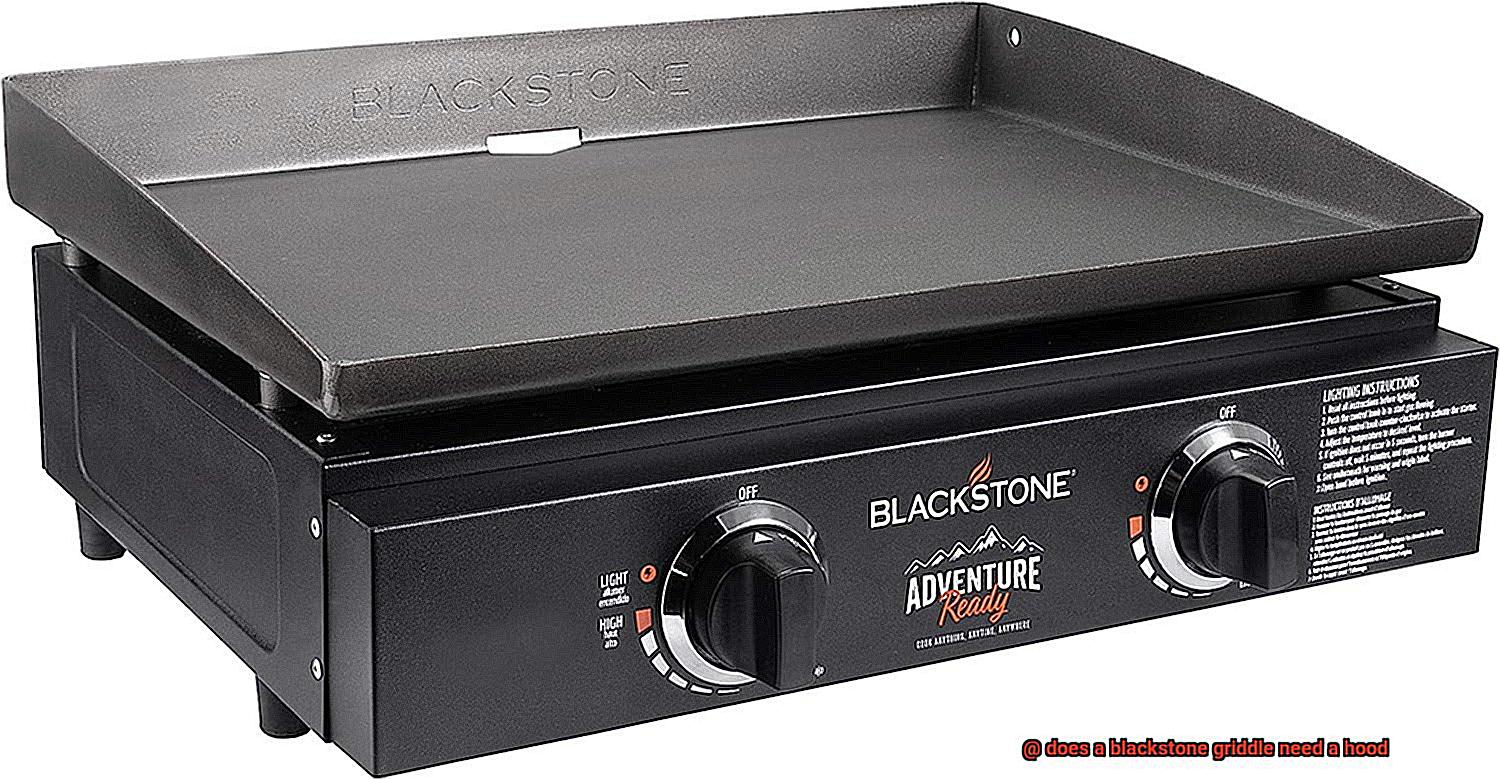
Safety First
Cooking outdoors can be a blast, but it also has its risks. For instance, some states require the use of hoods to capture smoke and exhaust fumes when using gas as a fuel source. This hood ensures that harmful fumes don’t escape into the environment and cause harm to people around you. It’s vital to know these regulations to guarantee the safety of yourself and your loved ones while enjoying grilled meals.
Avoid Fines and Legal Issues
Nobody likes getting hit with fines or facing legal trouble, but not following local regulations can lead you down that path. Some cities and homeowners’ associations have noise ordinances that limit the amount of noise you can make during certain hours of the day. Using a Blackstone griddle can produce quite a racket, especially if you’re cooking for a large group. By abiding by these rules, you can avoid unwanted fines or legal issues.
Consult with Local Authorities
If you’re uncertain about local regulations in your area, it’s always best to consult with your local authorities or fire department. They’ll provide advice on what type of hood to use and where to place it for maximum safety. They’ll also provide information on any noise ordinances or other regulations that may apply to your situation.
Benefits of Installing a Hood
If so, it’s time to take your cooking game to the next level by investing in a hood for your griddle. Not convinced yet? Let me break down the manifold benefits of installing a hood above your Blackstone griddle.
First and foremost, a hood plays a crucial role in keeping the air in your outdoor cooking area clean and smoke-free. Without one, smoke from your griddle can quickly fill the space, creating an uncomfortable and unhealthy environment for anyone nearby. But with a hood in place, you can enjoy cooking to your heart’s content without worrying about filling the air with smoke.
In addition to improving air quality, a hood also protects your outdoor kitchen from damage caused by smoke and grease buildup. Over time, smoke and grease can accumulate on walls, ceilings, and other surfaces, leading to unsightly marks and even fire hazards. A hood captures smoke and grease before it has a chance to spread throughout your cooking area, preventing damage to your outdoor kitchen.
Another significant benefit of installing a hood above your Blackstone griddle is that it enhances the overall cooking experience. With a hood in place, you can cook in a more controlled environment without worrying about distractions or interruptions. This means that you can focus on creating delectable meals without any unwanted interference.
Lastly, installing a hood above your Blackstone griddle can increase the value of your outdoor kitchen. A well-designed outdoor cooking area is often an impressive feature for potential homebuyers, and a hood is an essential component of any high-end setup. By investing in a quality hood, you’ll be able to enjoy all the benefits of outdoor cooking while also enhancing the value of your property.
Advantages of Cooking Without a Hood
While hoods are great for removing smoke and heat from the cooking area, there are actually some advantages to going without one.
Firstly, cooking without a hood can add a smoky flavor to your dishes. Whether you’re using wood, charcoal, propane, or natural gas, the lack of ventilation allows the smoke to permeate your food and create a desirable flavor profile that adds depth and complexity. Once you taste that smoky goodness, you may never want to go back.
Another benefit is that cooking without a hood can make the process more interactive and enjoyable. Without a hood, you need to stay engaged with your food, adjusting the temperature and flipping your items as needed. This hands-on approach allows you to really connect with your food and have some fun in the process.
Plus, cooking without a hood can be more cost-effective. Hoods can be expensive to install and maintain, especially for small businesses or home cooks who just want to enjoy some delicious meals without breaking the bank. By cooking without one, you can still achieve amazing results while keeping some extra cash in your pocket.
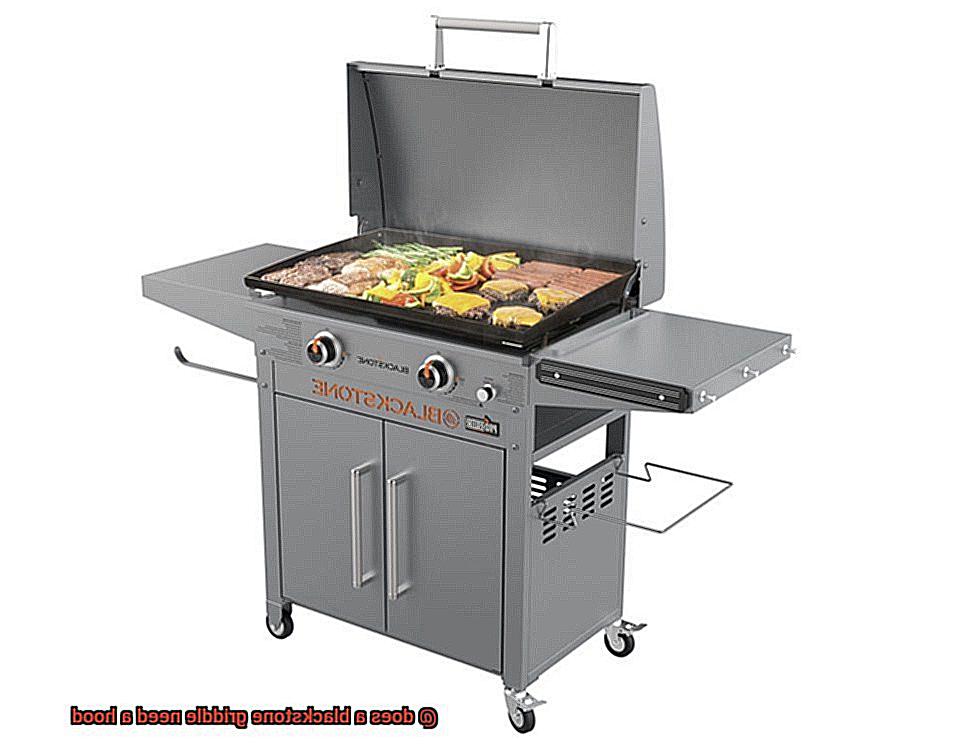
However, it’s important to note that there are also some downsides if proper precautions aren’t taken. Cooking without a hood can lead to smoke and heat buildup in your cooking area, which can be uncomfortable for you and anyone else nearby. Additionally, indoor cooking without proper ventilation could lead to dangerous levels of carbon monoxide. Therefore, safety should always be your top priority.
Tips for Cooking Without a Hood
Cooking on a Blackstone griddle can be a fun and flavorful experience, but it can also produce smoke and fumes that may be a cause for concern. Without the need for a hood, there are several tips and tricks you can use to cook safely and efficiently while still enjoying your culinary creations.
Keep Your Cooking Area Well Ventilated
Having ample ventilation in your cooking area is crucial when cooking without a hood. Open windows and doors to let fresh air circulate. You can also use a fan to help push the smoke and fumes out of the room, ensuring that you have a safe and breathable environment.
Use a Portable Ventilation System
Consider using a portable hood or vent over your griddle. These devices can be found at most hardware stores and will help to suck out any smoke or fumes that may be produced during cooking. They are easy to install, affordable, and effective in reducing unwanted smoke and odor in your kitchen.
Choose Your Cooking Oils Wisely
The type of oil you use when cooking on a Blackstone griddle matters. Some oils have a low smoke point and can produce a lot of smoke when heated. Instead, opt for oils with a higher smoke point, such as canola or vegetable oil. This type of oil will produce less smoke and prevent any excessive splattering while cooking.
Keep Your Griddle Clean
A clean griddle is essential for safe and efficient cooking without a hood. A dirty griddle can produce more smoke and fumes than a clean one. Use a scraper to remove any burnt-on food or grease from the surface after each use, ensuring that your griddle is always ready for your next culinary adventure.
Use a Lid or Cover When Cooking
Using a lid or cover when cooking on the griddle is another effective way to reduce smoke production. The cover will help trap heat and reduce the amount of smoke that’s produced. This method is especially useful when cooking items that require longer cooking times, such as burgers or steaks.
Keep an Eye on Your Food While Cooking
It’s essential to keep an eye on your food while cooking on the griddle. This will ensure that your food is cooked evenly and prevent any burning or smoking. Adjust the temperature accordingly to avoid overcooking or undercooking your meal.
Alternatives to Installing a Hood
There are alternatives to installing a hood that can still make your grilling experience enjoyable and hassle-free.
Firstly, consider taking your cooking outside. If you have a covered patio or outdoor kitchen area, setting up your Blackstone griddle outside can eliminate the need for a hood altogether. Imagine the delicious aroma of burgers and steaks wafting through the fresh outdoor air.
If outdoor cooking isn’t an option, invest in a portable ventilation system. These compact devices are designed specifically for use with griddles and other cooking appliances, and their fan and filter system effectively removes smoke and fumes from the air. Simply place it next to your Blackstone griddle while in use, and voila.
Don’t want to spend money on a portable ventilation system? No problem. Utilize a range hood or exhaust fan that is already installed in your kitchen. While they may not be as effective as dedicated hood systems, they can still help remove some of the smoke and fumes generated by your Blackstone griddle.
Of course, proper usage of your Blackstone griddle is crucial in minimizing smoke and fumes. Keep your cooking area clean and well-ventilated, choose cooking oils wisely, use a lid or cover when cooking, and always keep an eye on your food while cooking.
Conclusion
To sum it up, the need for a hood above your Blackstone griddle hinges on several factors that include where you’re cooking, what you’re cooking, the size of your griddle, and local regulations. While not mandatory, a hood can be a valuable addition to your Blackstone griddle as it helps trap and remove smoke and heat from the cooking surface. This makes it easier to cook without worrying about respiratory issues or eye irritation.
If you do opt for a hood, there are various types available in the market today, such as wall-mounted hoods and island hoods. However, if installing a hood isn’t feasible due to space constraints or budget limitations, there are alternatives such as taking your cooking outdoors or investing in a portable ventilation system.
Irrespective of whether you choose to install a hood or not, it’s crucial to keep your cooking area well-ventilated and clean. Making wise choices when selecting your cooking oils, using lids or covers while cooking, and keeping an eye on your food can also help minimize smoke and fumes.

